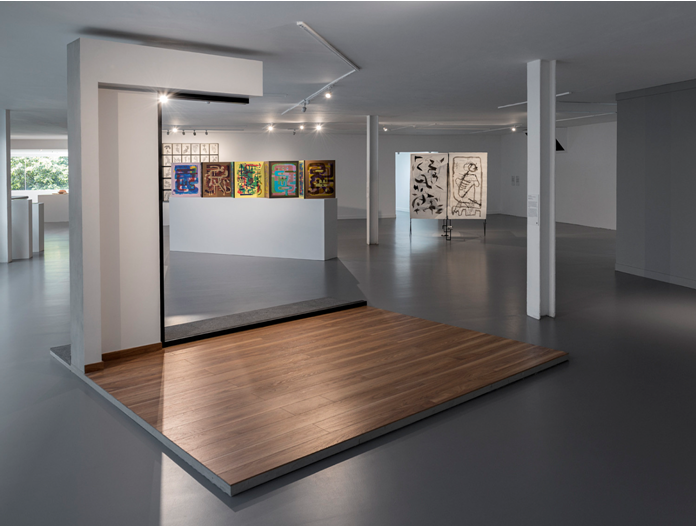Modos de Ver: la exposición del programa del BBVA Bancomer Museo de Arte Carrillo Gil
On view as of January 26, Ways of Seeing presents the work of Julieta Aguinaco (Mexico City / La Paz), Lorena Ancona (Chetumal / Oaxaca), Cecilia Barreto (Mexico City), Victoria Estrada (Mexico City), Yolanda Ceballos (Monterrey), Amauta García (Puebla / Mexico City), Bayrol Jiménez (Oaxaca), Antonio Monroy (Toluca / Mexico City) and Pablo Tut (Campeche / Mérida).

The BBVA Bancomer Museo de Arte Carrillo Gil (MACG) Program issues a biannual call for Mexican artists between the ages of 23 and 35 to be part of a training program that supports the development, production and exhibition of new projects under the supervision and accompaniment of a guest curator, in this case Tatiana Cuevas. With this fifth edition the program will have been in existence for a decade, during which time it has consolidated itself as a laboratory for training young artists.
The exhibition is the result of 18 months of work, research and dialogue with a set of interlocutors from a variety of disciplines, proposing an analysis of the habits, conventions and systems that define the ways of producing and seeing art today, while at the same time dislocating this gaze by approaching other perspectives and methodologies.
The title of this edition of the program is taken from John Berger's influential television series about visual culture and his book of the same name, published in 1972, both of which would give a radical twist to traditional ways of seeing and thinking art. For the first time, a mass public was presented with an interpretation that went beyond the limitations of a formal analysis of artworks or a biographical analysis of artists' lives, taking into account not only the principle that the visual representation of every time and context is an integral part of cultural understandings, political doctrines, social norms and philosophical positions, but also that the appreciation of said images is affected by our very way of seeing.
The exhibition brings together nine perspectives that address some of the urgent problems that have been posed by the crisis of credibility in political agreements and the promises of economic systems; the difficulty of imagining new social structures; and the erosion of institutions, urban projects and the ways in which the future is conceived. It deals with a generation that is facing falling expectations for individual and collective wellbeing, while at the same time being confronted in the professional sphere with a panorama in which academic, cultural and commercial interests overlap with each other, confusing the real value of artistic practice: namely, giving shape to visions that are capable of bestowing a different meaning on their historical circumstances. This set of works questions the relevance of the responses that the language of art can offer, pointing toward necessary, inevitable ruptures in those ways of seeing.




